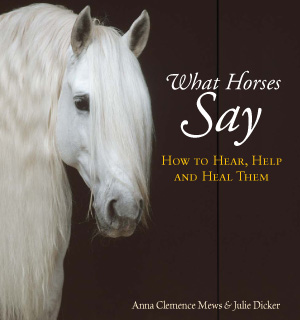Speaking with the animals
Since animals can't speak, how do they communicate with us? Of course, we read their body language and often interpret it accurately but Julie connects at another level where she is able to communicate directly with the horse's mind, acting as a bridge between horse and human. Another way of putting this would be to say that she is working with the invisible energy which surrounds all living creatures, defined loosely as 'energetic material.'
This vast sea of energy in which we all swim, whether we actively perceive it or not, connects us to every form of life from an earwig to an elephant, from a snail to a stallion. Some individuals are able to make this 'connection' more easily than others, although it is almost certainly a dormant talent within everyone.
The language of animals is, of course, is not verbal, although their understanding of our words is often at a higher level than we generally credit them. Their communication with Julie is more easily expressed in pictures, in visual images, as well as sensations or feelings that she might experience in her own body. It is then her task to translate, as accurately as possible, the messages that the animal is sending.
"What I do,' says Julie, 'depends very much on the animal. Whether it is distant healing or communication, I always ask the animal if he or she would like my help and as long as they say 'yes' I am happy to go ahead. I always ask their permission first.
"Then, if they've got something they want to tell me, I might get a number of different signals. Sometimes it's a kind of inner voice or a picture, other times I get a feeling of where it's hurting in the horse or in the animal, reflected in my own body. Sometimes it's all three but not necessarily in that order. The level of communication varies a lot and it. With some animals they have very little they want to convey, with others there is a great deal and the images and sensations often come so fast that it's hard to keep pace with them."
"I have to interpret what an animal is communicating as clearly as I can. So of course I have to put it in words that will resonate with the people I'm talking to, so they can take it on board. For me, healing and communication are difficult to separate. Sometimes an animal doesn't have much to say but is in pain and that's what I have to sort out first. Every creature is different. But if I'm called to see an animal, it would be very unusual if it didn't need healing. Although sometimes just being able to tell me what the problem is can be healing in itself."


